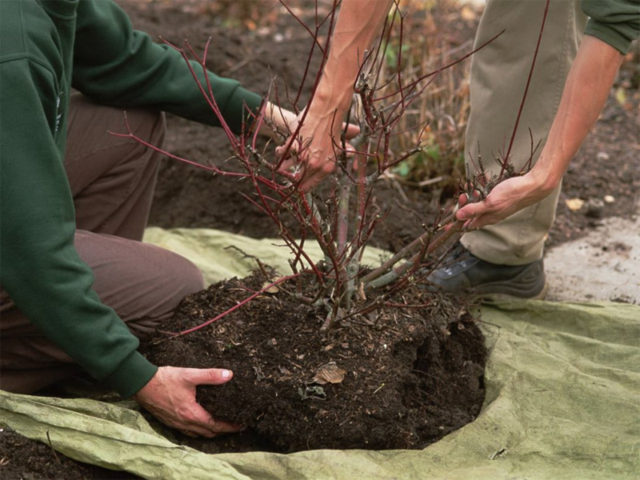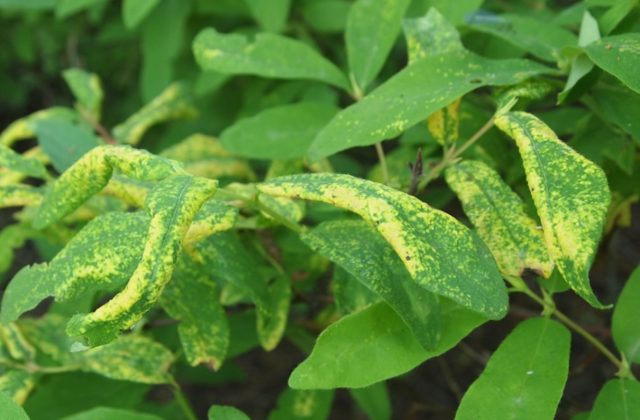Content
On the basis of the South Ural Research Institute of Horticulture and Potato Growing, many new varieties of vegetables and fruits have been developed. One of the assets of the institute is the Bazhovskaya honeysuckle. The variety was named after the children's writer Pavel Bazhov. Now this culture is at the peak of popularity not only among connoisseurs of the bright taste of the fruit, but also among landscape designers.
Description of edible honeysuckle Bazhovskaya
The distinctive sign of the berries of this shrub is a tasting score of 5 points, without bitterness. The average weight of the fruit is 1.3 g, dark blue in color. The shape of the berries resembles barrels with a characteristic patina for this family of plants.
The bush itself has the following characteristics:
- Spreading.
- The shoots are curved.
- Winter-hardy.
- Cross pollinated.
- Early fruiting, bears fruit 1.5 months after flowering.
- Productivity is low, up to 1.5 kg.
- Winter and drought resistant.
Young branches are dark green with a purple tint. The leaves are lance-shaped and large. Fruiting occurs in 3-4 years.The height of the Bazhovsky honeysuckle bush reaches 1.8-2 meters.

Honeysuckle berries are barrel-shaped and have a characteristic dark blue color.
Planting and caring for honeysuckle Bazhovskaya
Planting is best tolerated by plants with a closed root system. The roots of Bazhovskaya honeysuckle bushes release a huge amount of biologically active substances, so gooseberries and black currants can be grown nearby. Stone fruit and pome crops grow well together.
There are no special conditions for caring for the plant; it is periodically watered, fed and preventively pruned.
Landing dates
The ideal time for planting Bazhovskaya honeysuckle is after the snow melts, during the swelling of the buds. If you missed this moment, then it is better to postpone the planting to autumn, when the dormant phase begins. Before frost begins, the roots of honeysuckle seedlings must take root. This period falls on the last ten days of September.
The closed root system of honeysuckle allows them to be planted in the autumn or spring season. Plants with an open root system are more demanding, so it is better to plant them in the fall, since in the spring it will be difficult for the plant to simultaneously increase the root mass and develop the crown, which in most cases leads to the death of honeysuckle.

The plant does not require any care at all
Selection and preparation of a landing site
Honeysuckle Bazhovskaya is an unpretentious crop, but it cannot be left completely unattended. Bushes are planted in areas where the soil warms up well and there is no draft.
There are practically no special requirements for the soil, the main thing is that it is not sandy or swampy.If the soil is acidic, then before planting, about a month in advance, it should be limed.
Landing rules
Honeysuckle Bazhovskaya is planted at a distance of 1.5-2 m from each other. The row spacing should be from 2 to 2.5 m. If this rule is not followed, as the bushes grow, they will join together and the yield will decrease. Before planting, the entire area must be cleared of weeds.
Preparation and planting:
- First, you should dig a hole measuring 50x60 cm; for several plants, you can make a trench 5-7 days before planting.
- It is advisable to lay a drainage layer at the bottom, which can be broken brick, expanded clay or crushed stone.
- Then apply fertilizer.
- Make an earthen mound and deepen the root collar 4-5 cm below ground level.
- Compact the soil.
- Make a watering roller 15 cm high.
- Water each bush generously with water (1.5-2 buckets).
- Cover the tree trunk circle with mulch.
For fertilizer, make a mixture of humus, wood ash, or use ready-made Agrovitkor. To improve moisture holding capacity, vermiculate can be added.
Before planting seedlings with an open root system, they are carefully inspected. All broken branches are cut off, and the roots are shortened to 30 cm. Before planting, it is advisable to immerse them in a bucket with earthen mash.

Seedlings with a closed root system can be planted in autumn and spring
Watering and fertilizing
Bazhovskaya honeysuckle should be watered as the top layer of soil dries. From May to June, about 4-6 waterings are carried out. If the moisture evaporates quickly, then the soil is mulched.
Fertilizers are applied 3 times during the season:
- During the flowering period, around April, you need to add a mixture of ammonium nitrate and urea.
- During the ripening of honeysuckle fruits, in July they are fertilized with nitrophosic or slurry.
- After picking the berries, potassium salt or superphosphate is added in September.
It is recommended to mulch 2-3 times throughout the season. It can be humus or peat.
Every 3 years it is recommended to apply organic fertilizers.
Pruning honeysuckle variety Bazhovskaya
Adult Bazhovskaya honeysuckle bushes are subject to regular sanitary pruning. Be sure to remove broken, dried and diseased branches.
To avoid damage to honeysuckle flower buds, the upper young shoots are not touched.
Old plants are allowed to undergo anti-aging pruning. To do this, the bush is pruned at a height of 50 cm from the ground. After 3 years the bush will be completely restored.
To avoid fungal infection, shoots after flowering are cut by ½ and Bordeaux mixture is used for spraying.
Wintering
Honeysuckle Bazhovskaya tolerates frosts down to –30 °S. Therefore, if we are talking about central and southern Russia, then shelter is not required. Before wintering, the bush must be thoroughly watered.
The tree trunk circle is thoroughly cleaned of debris and fallen leaves and the soil is covered with compost, which will protect it from frost.

Honeysuckle tolerates harsh winters well, so it does not require shelter
Reproduction of edible honeysuckle Bazhovskaya
Reproduction occurs by rooting annual shoots or cuttings. The most labor-intensive method is seed.
To grow honeysuckle from a cutting, take a shoot 20 cm long, always from a young branch, and dig it in at an angle of 45ABOUT by 2/3. Before planting, the soil must be thoroughly moistened.
With the layering method, the lower branch is attached to the ground using a staple or wire and sprinkled with earth.
Seed method:
- Seeds are collected from selected fruits at the end of summer and dried.
- In autumn, a layer of sand is placed in a container, watered and seeds are sown.
- Cover the container with a lid.
- Sent to the bottom shelf in the refrigerator until spring.
- Water the seeds every 2 weeks.
In the spring, the seeds are transplanted into fertile soil, the container is covered with film and sent to a semi-dark place. When the first honeysuckle sprouts appear, the film is removed. Seedlings are planted in open ground in September. The ground around young honeysuckle must be mulched.
Pollinators of honeysuckle Bazhovskaya
All varieties of honeysuckle are cross-pollinated. If it does not bloom, it means that plants of the same variety are planted on the site. For fruiting of honeysuckle Bazhovskaya, the optimal pollinators are: “Sorceress”, “Sineglazka” and “Amphora”.
Diseases and pests
Despite its unpretentiousness and disease resistance, Bazhovskaya honeysuckle can still suffer from a number of pests:
- Honeysuckle aphid. Its appearance is characterized by yellowing of the bush. You can get rid of it by spraying with infusions of pepper, tobacco or garlic. The drugs "Elexar" and "Aktara" are suitable.
- Honeysuckle mite. In the presence of this pest, dark spots appear on the leaves, and by the end of summer the leaves become brown and can even dry out completely. To get rid of ticks, use “Aktellik” or “Rogor”. Thinning is also recommended, since its appearance is often associated with severe thickening of the planting.
- Honeysuckle fingerwing. A characteristic sign of the appearance of the pest is the darkening of the fruits even at the ripening stage. Honeysuckle berries wrinkle and actively fall off.You can get rid of the problem with the help of Inta-Vir; a tincture made from potatoes or tomatoes is suitable.
- Powdery mildew. The appearance of this problem is characterized by a whitish coating on the bottom of honeysuckle leaves. The drug “Topaz” or treating the foliage with wood ash helps.
If the Bazhovskaya honeysuckle is infected with phytoviruses, then no means will help; the bushes are completely dug up and burned. In the presence of a phytovirus, brown spots and a light green hue appear on the foliage along the central vein.

The plant rarely gets sick, but if it is affected by a phytovirus, the bush is completely destroyed
Conclusion
Honeysuckle Bazhovskaya is not only an unpretentious crop that produces tasty and healthy fruits, but also an ornamental plant that will decorate any area. With proper care, the bush can bear fruit for up to 25-30 years.












